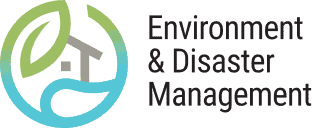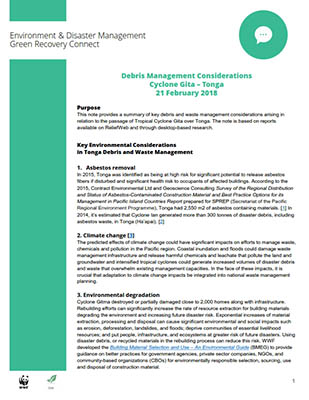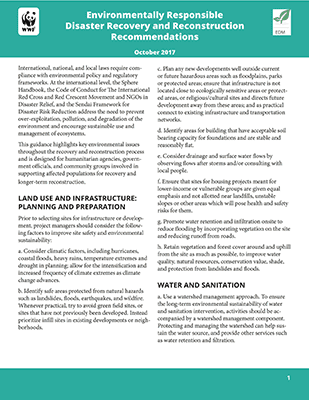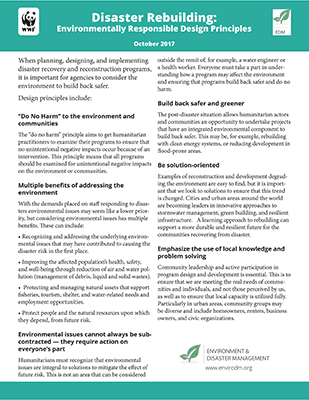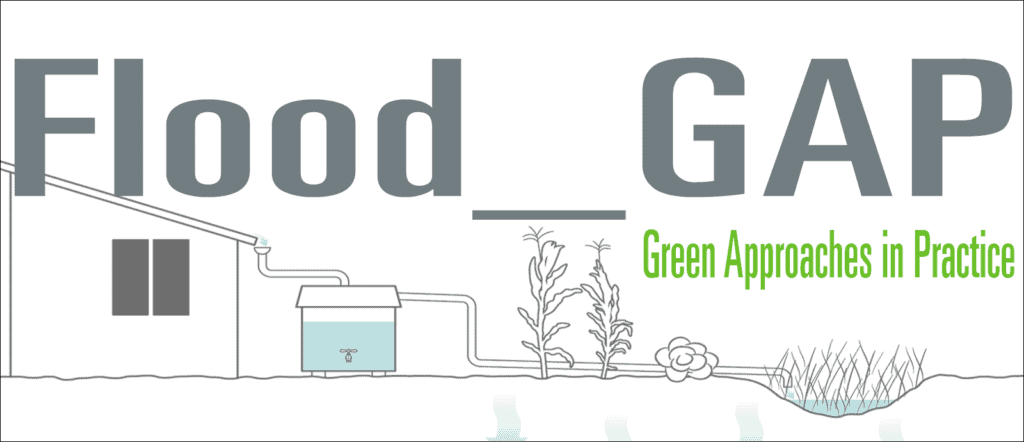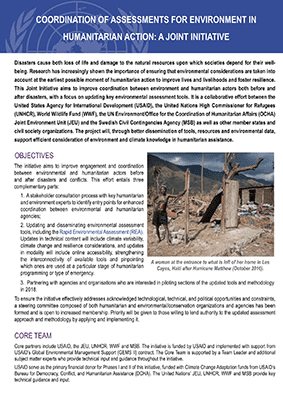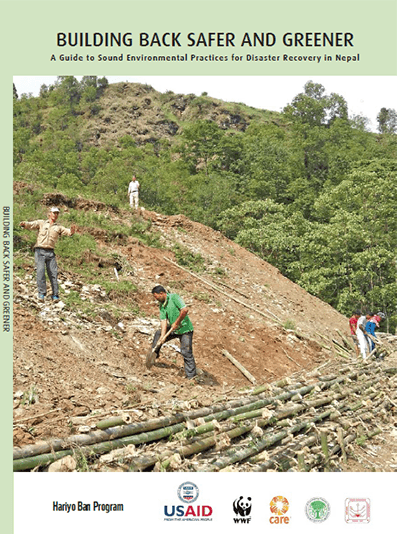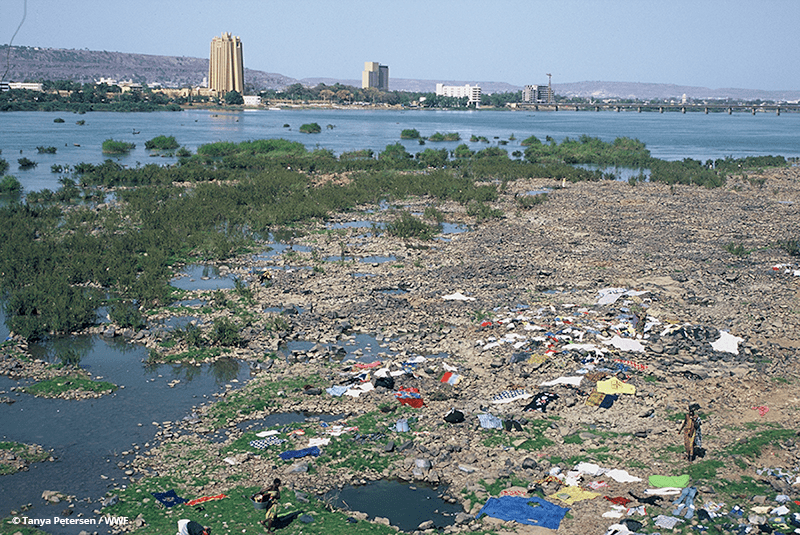Debris Management Considerations: Cyclone Gita – Tonga
This note provides a summary of key debris and waste management considerations arising in relation to the passage of Tropical Cyclone Gita over Tonga. The note is based on reports available on ReliefWeb and through desktop-based research.
Read MoreEnvironmentally Responsible Disaster Recovery and Reconstruction Recommendations
International, national, and local laws require compliance with environmental policy and regulatory frameworks. At the international level, the Sphere Handbook, the Code of Conduct for The International Red Cross and Red Crescent Movement and NGOs in Disaster Relief, and the Sendai Framework for Disaster Risk Reduction address the need to prevent over-exploitation, pollution, and degradation of…
Read MoreDisaster Rebuilding: Environmentally Responsible Design Principles
When planning, designing, and implementing disaster recovery and reconstruction programs, it is important for agencies to consider the environment to build back safer.
Read MoreFilling the knowledge gap between theory and practice
OVERVIEW Flood Green Approaches in Practice (Flood GAP) is an effort led by the WWF Environment and Disaster Management Program to crowdsource information on how and where natural and nature-based water management methods are being used around the world. We recognize that nature-based approaches may have multiple functions. We are particularly interested in emerging better…
Read MoreCoordination of Assessments for Environment in Humanitarian Action: A Joint Initiative
For more information visit: http://www.eecentre.org/assessments Disasters cause both loss of life and damage to the natural resources upon which societies depend for their well-being. Research has increasingly shown the importance of ensuring that environmental considerations are taken into account at the earliest possible moment of humanitarian action to improve lives and livelihoods and foster resilience.…
Read MoreBuilding Back Safer and Greener: A Guide to Sound Environmental Practices for Disaster Recovery in Nepal
Post-disaster recovery and reconstruction can cause many adverse environmental impacts. This guide outlines ways in which they can be avoided in Nepal, and good practices can be promoted, in order to reduce future disaster risk and ensure long-term livelihoods and well-being for local people. The guide covers settlements and land use planning; building construction; waste…
Read MoreBogota Urban Land Use Management and Flood Risk Reduction
Colombia’s capital, Bogotá, has a population of 9 million people and is the center of the country’s administrative, financial, cultural and service life. Bogotá is located on a savanna, 2,600 meters above sea level, on the eastern Andean mountain range. The city is crossed by rivers and surrounded by wetlands and mountains. Despite its growing…
Read MoreMeeting Multiple Objectives with Flood Risk Management
Water and sanitation are intrinsically linked to flood risk management, particularly in urban areas. When sewage and drainage infrastructure is unable to keep up with population growth, flood risk is increased; flood risk can also be compounded when outflows, drains and waterways are blocked by debris or encroached upon or occupied by informal settlements. Such a situation…
Read MoreFlash Floods: Alternative Management Options in Kulob City, Tajikistan
The city of Kulob, located in south-center Tajikistan, is an area extremely vulnerable to flash flooding. Typically, between March and May, a combination of heavy rainfall and snow melt flow into normally dry rivers and gullies. Paved streets, dense housing, and the growth of urban areas into the hills above the city make flash flood…
Read MoreFactors in Urban Flooding
Urban flooding typically results from multiple factors at multiple scales. Changes to land use upstream or in the region, or other factors within city limits, can lead to local flooding. The case below illustrates how urban flooding can be managed at different scales. In 1998, intense rainfall led to a severe flood and inundation of…
Read More